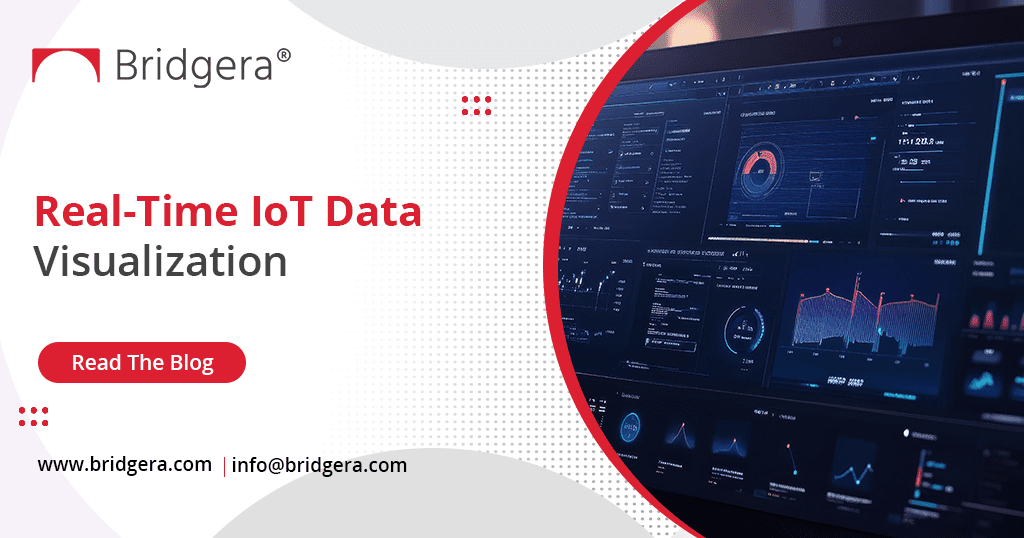Real-time IoT data visualization is crucial for businesses that are leveraging the power of IoT to transform their productivity and analytics. The sensors in your factories collect a vast stream of live, raw data. It is only through IoT data visualization that this raw data can be converted into actionable insights that will help you make the right business decisions.
In this article, we will dive into exactly what IoT data visualization is, its benefits, popular techniques, the role of emerging technologies in the future of IoT data visualization, and why dashboard customization is so significant.
IoT Data Visualization: What is it and Why is it Important?
The true value of IoT data for your business can only be unlocked with the right IoT data visualization platforms and techniques.
IoT data visualization is the process of transforming vast amounts of data collected by IoT devices into clear and actionable displays like a dashboard, graphs, charts, and maps.
Without data visualization, it would be nearly impossible for all stakeholders to monitor their asset performance, identify issues before they happen, and improve operational efficiency. The analysis of these complex datasets helps business leaders make the right business decisions, backed by real-time data.
Benefits of IoT Data Visualization
Improved Understanding of Real-Time Data
The raw data collected by a variety of IoT devices is transformed into real-time insights, helping all stakeholders gain a thorough understanding of real-time data.
Real-time Monitoring of Asset Data for Better Decision Making
Imagine many sensors collecting data on numerous factors across your factory floor. With an IoT dashboard, you can monitor changes and fluctuations in real time. This helps managers identify potential issues and bottlenecks before they happen and take proactive action to minimize business disruptions.
Predictive Analytics and Forecasting Based on Trends and Patterns
IoT dashboards can glean a wealth of insights from analysis of historical data. Machine learning algorithms can identify patterns and trends based on historical data to facilitate accurate predictive analytics and insights. This helps businesses plan and make proactive, data-driven decisions for their businesses.
Popular Techniques of IoT Data Visualization
Techniques of data visualization should match your requirements as a company. Here are a few of the most popular techniques of IoT data visualization leveraged today.
- Heatmaps: This technique represents the density of data on a map or a grid. This is ideal for geographic data representation and allows stakeholders to identify patterns and trends across locations in real time.
- Gauge Charts: Gauge charts display a specific value within a pre-set range in real time. Common examples of gauge chart parameters are pressure, temperature, battery data, or system health.
- Interactive IoT Dashboards: An interactive IoT dashboard allows stakeholders to monitor and assess data insights based on a wide variety of pre-set metrics and track all of them simultaneously. It gives you a very comprehensive overview of your operations and the variables within them.
- Geographic Information Systems (GIS): These systems integrate IoT device data with geographic locations to give you a real-time visualization of data. This is particularly useful for the logistics, environmental monitoring, and healthcare industries.
- Scatter Plots: Scatter plots are used to depict the correlation between two variables. This is indispensable for businesses that want to identify correlations between parameters or variables.
Role of Emerging Technologies in IoT Data Visualization
The rise of edge computing has decreased latency and increased the speed of analysis and delivery of insights. Especially in industries that need enhanced automation and immediate decision-making, edge computing has proven to be invaluable.
Integrations with AI and Machine Learning
The convergence of Artificial Intelligence (AI) and Machine Learning (ML) with IoT data visualization is transforming the way businesses interpret and act on complex data. These advanced algorithms excel at rapidly identifying patterns and anomalies across vast data sets—capabilities far beyond human capacity. This integration has paved the way for predictive maintenance and analytics, enabling organizations to proactively address issues before they arise. Additionally, innovations like digital twin simulations are redefining strategic planning by allowing companies to model and evaluate real-world scenarios before making critical decisions.
Customization of Dashboards is Crucial
To fully realize the value of IoT data, visualization platforms must be customizable to align with your organization’s unique goals and operational needs. The ability to personalize your dashboard based on your business metrics, KPIs, and business objectives is no longer a luxury, but an absolute necessity. A flexible IoT dashboard gives enhanced clarity, improves usability for all stakeholders, and ensures timely access to relevant insights for all stakeholders.
Find the Right IoT Visualization Partner
Bridgera’s IoT visualization tools and dashboards are fully tailored to the needs of each client. Our white-label IoT solution can give you predictive maintenance and analytics capabilities, digital twin simulations, and much more.
Contact one of our experts for a quick, free, consultation today and leverage Bridgera’s expertise across industries like OEMs, oil and gas, healthcare, and logistics.
About Bridgera: Bridgera effortlessly combines innovation and expertise to deliver cutting-edge solutions using connected intelligence. We engineer experiences that go beyond expectations, equipping our clients with the tools they need to excel in an increasingly interconnected world. Since our establishment in 2015, Bridgera, headquartered in Raleigh, NC, has specialized in crafting and managing tailored SaaS solutions for web, mobile, and IoT applications across North America.
About the Author: Krishna Varma is a writer and researcher, who enjoys writing about technology, IoT, and lifestyle. When she isn’t writing and reading, you’ll find her relaxing with a quiet cup of tea over the weekends.
